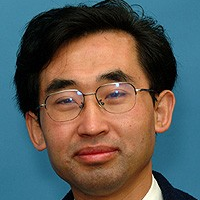Wireless Power Transfer for Smart Industrial, Biomedical and Home Applications
A special issue of Applied Sciences (ISSN 2076-3417).
Deadline for manuscript submissions: closed (1 February 2019) | Viewed by 16669
Special Issue Editors
Interests: wireless power transfer; power electronics; renewable energy
Special Issues, Collections and Topics in MDPI journals
Interests: wireless and quasi-wireless power transmission and communication; multi-level inverter control and design; renewable power generation; instrumentation; sensing
Special Issues, Collections and Topics in MDPI journals
Special Issue Information
Dear Colleagues,
We would like to invite you to submit your research findings to a Special Issue of Applied Sciences on the subject area of wireless power transfer technologies. This Special Issue will reflect the most recent theoretical and practical developments of wireless power research for smart industrial, biomedical, and home applications. Topics to be covered in this Special Issue include, but are not limited to, the following:
- Wireless power supply to distributed sensors and IoTs
- Wireless power supply to robotics and automation systems
- Wireless charging of AGVs (Automatic Guided Vehicles), materials handling and logistic systems
- Wireless power supply of biomedical sensors and actuators, heart pumps
- Wireless power supply in smart homes
- Wireless charging of mobile phones, pads, smart watches
- Static and dynamic EVs charging
- Wireless power transfer mechanism
- System modelling and power flow control
- Soft switching converter topologies
- Magnetic coupling design
- Capacitive coupling design
- New ferrites and dielectric materials
- Ultrasonic transducers for wireless power transfer
- Energy harvesting technologies
- Wireless power for smart grids
- Wireless energy network
- Bi-directional wireless interface for PV and wind energy integration.
Prof. Dr. Aiguo Patrick Hu
Dr. Charles Van Neste
Guest Editors
Manuscript Submission Information
Manuscripts should be submitted online at www.mdpi.com by registering and logging in to this website. Once you are registered, click here to go to the submission form. Manuscripts can be submitted until the deadline. All submissions that pass pre-check are peer-reviewed. Accepted papers will be published continuously in the journal (as soon as accepted) and will be listed together on the special issue website. Research articles, review articles as well as short communications are invited. For planned papers, a title and short abstract (about 100 words) can be sent to the Editorial Office for announcement on this website.
Submitted manuscripts should not have been published previously, nor be under consideration for publication elsewhere (except conference proceedings papers). All manuscripts are thoroughly refereed through a single-blind peer-review process. A guide for authors and other relevant information for submission of manuscripts is available on the Instructions for Authors page. Applied Sciences is an international peer-reviewed open access semimonthly journal published by MDPI.
Please visit the Instructions for Authors page before submitting a manuscript. The Article Processing Charge (APC) for publication in this open access journal is 2400 CHF (Swiss Francs). Submitted papers should be well formatted and use good English. Authors may use MDPI's English editing service prior to publication or during author revisions.
Keywords
- Wireless power transfer (WPT)
- Contactless power transfer
- Inductive power transfer (IPT)
- Capacitive power transfer (CPT)
- Ultrasonic power transfer (UPT)
- Batteries
- Supercapacitors
- Wireless charging
- Transcutaneous energy transfer (TET)
- Energy harvesting
- Wireless integration of renewable energy
- Smart home
- Smart grid






